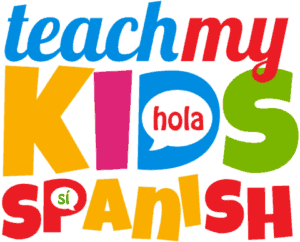
If you are trying to learn to speak Spanish or are planning a trip to a Spanish speaking country, it will be helpful to learn some key conversation starters. Learning a handful of conversation starters in Spanish can help you communicate with others better and shows that you are willing to learn to speak politely and correctly in another language.
Starting conversations in Spanish doesn’t have to be difficult and can be done just like in English. Start with a greeting, then introduce yourself, and then ask a question. Once you start a conversation with someone, you will also need to understand what they say and be able to give a response.
Keep reading to learn more about how to start a conversation in Spanish. We will go over a few general examples and then give you some ideas for different scenarios you might find yourself in, as well as some tips for phrases and slang terms for specific countries you might visit.
Basic Conversation Starters
Learning a language through school or on your own is completely different from conversing with a native speaker. With all of the nuances found in the Spanish language, it can be overwhelming to go from the classroom to the real world. Use the conversation starters that we have compiled in this guide to help you have a real conversation in Spanish.
When starting a conversation in Spanish, you want to say hello and then introduce yourself or ask a question to get to know the other party, just like in English. Just as with anywhere you go, you can try to start a conversation with anyone you meet.
If you are beginning to learn Spanish, a fluent speaker will likely be able to tell and will usually adjust their speech for you, but we will also let you know how to communicate your fluency level. The following table goes over some basic conversation starters that you might use in English, as well as the Spanish translation.
| English | Spanish |
| Hi, I’m Austin | Hola, soy Austin |
| Hi, what’s your name? | ¿Hola, cómo te llamas? |
| Good morning, Good afternoon, Good night | Buenos días, Buenas tardes, Buenas noches |
| How are you? (Formal for someone you don’t know.) | ¿Cómo está usted? |
These phrases are pretty basic and might be what you would learn if you took a beginner language course. You can use these to open up a conversation, but if you want to really talk with someone, you will need more phrases and questions to say and ask.
Of course, there are more advanced conversation starters or follow up questions to ask to continue a conversation, which we will discuss later in this article.
Indicating Your Fluency Level
When you start a conversation in Spanish with someone who speaks the language fluently, it might also be a good idea to tell them how much Spanish you know so that they can adjust their speaking to help you understand it. They might even be willing to have a simple conversation with you to help you practice.
There are several ways that someone can tweak their speech to accommodate someone learning Spanish. For example, if someone knows your fluency level, they can adjust their:
- Enunciation
- Sentence structure
- Talking speed
- Vocabulary
To let someone know that you are just learning Spanish, you can say, “Estoy aprendiendo español.” If you have been studying Spanish for some time but still aren’t confident in your speaking abilities, you can say “Hablo español mas o meños,” or “I speak Spanish more or less.” This is a common phrase that will let the other person know that you are not necessarily a beginner but are also not fluent yet.
If you speak Spanish at a native fluency level, you probably don’t need the information in this section of the article! Letting someone know your fluency level can be key in preventing you from getting into a conversation where you don’t know what the other person said or even how to respond to them correctly. Using the phrases mentioned will help make sure you are getting useful Spanish speaking practice at the right fluency level.
Asking Different Questions

There are a ton of reasons that you might want to learn how to start a conversation in Spanish. Whether you are learning the language for school or because you simply want to learn it, or if you are trying to cram some information before a trip to a Spanish speaking country, it can be helpful to know how to ask questions about all kinds of topics.
Just like in English, a good way to have a conversation with someone is to ask them questions about themself. Knowing how to ask these types of questions will help you be more polite and can help you continue a conversation. Some topics that are good to know some questions and vocabulary about are:
- Getting to know someone
- Food
- Hobbies
Throughout the next few sections, we will discuss how to start conversations about these topics, understand someone’s response to your questions, and respond if you are asked something similar.
Getting To Know Someone
Whether you are traveling in a Spanish speaking country and want to talk to the person sitting near you at dinner or trying to make a new Spanish speaking friend, it is important to know how to ask questions about someone. This shows that you are interested in that person and is generally a polite thing to do when making friends.
Some basic conversation starters for getting to know someone are:
- Where are you from? – “¿De donde eres?”
- What do you do for a living? – “¿A qué se dedica?”
- Do you have any pets? – “¿Tiene mascotas?”
- Do you like to travel? – “¿Te gusta viajar?”
If you ask someone a question like any of the above, you should also be prepared to understand their answer or respond if they ask the same question to you. Some responses to these questions that you should be familiar with include:
- I am from ___ – “Soy de ___”
- I live ___ – “Yo vivo en ___”
- I am a student – “Soy un estudiante”
- I am a lawyer – “Soy abogado”
- I am a doctor – “Soy doctora”
- I have a dog – “Tengo un perro”
- I have two cats – “Tengo dos gatos”
- Yes, my favorite place that I have visited is ___ – “Si, mi lugar favorito que he visitado es ___”
With these key questions and phrases, you will be able to have a conversation where you really start to get to know the other person, and they can know you.
Talking About Food
Another super important topic to be able to talk about is food. If you are traveling, you need to be able to figure out how to order food. No matter your circumstances for learning to speak Spanish, it is important to learn about different foods as they can be important aspects of many cultures.
You can use questions and phrases about food to learn more about someone and their interests, get recommendations or order food in a restaurant situation. Some conversation starters related to food include:
- What is your favorite food? – “¿Cuál es tu comida favorita?”
- What are the ingredients in this dish? – “¿Cuáles son los ingredientes de este plato?”
- What is a popular dish in your country? – “¿Qué es un plato popular en tu país?”
Some responses to these questions that you might hear or should know how to say yourself are:
- My favorite food is ___ – “Mi comida favorita es”
- This dish has chicken, beans, rice, and salsa – “Este platillo tiene pollo, frijoles, arroz y salsa”
- Here in Mexico, we love to eat birria tacos – “Aquí en México nos encanta comer tacos de birria”
If you are expecting to have a conversation in Spanish about food using these conversation starters, you should be prepared to respond in Spanish as to your favorite foods or a famous dish from where you grew up. You can also brush up on other food vocabularies if someone needs to describe a complex dish or their favorite food to you.
Talking About Hobbies

Another topic of conversation starter is hobbies. This goes along with getting to know someone, but you can also use the topic to learn about common hobbies, popular sports, or other traditional practices from certain countries and cultures.
Some conversation starters related to hobbies include:
- What do you like to do for fun? – “¿Que te gusta hacer para divertirte?”
- What is the national sport of your country? – “¿Cuál es el deporte nacional de tu país?”
- What is your favorite type of music? – “¿Cuál es tu tipo de música favorita?”
When asking someone about their hobbies, some example answers you can expect to hear or should know how to say yourself include:
- I like to cook, read, and run – “Me gusta cocinar, leer y correr”
- The national sport of Mexico is charrería – “El deporte nacional de México es la charrería”
- I like to listen to jazz – “Me gusta escuchar jazz”
Talking about hobbies can be a great way to get to know someone better or learn about a specific place or culture. Asking people about their interests is polite and shows that you are interested in them and the conversation. Using these conversation starters can help you learn more and increase your conversational skills.
Continuing Conversations
Now that you have started a conversation with someone and asked some questions, you might find yourself wanting to know more than what you originally asked, but not wanting to end up in an interview type of conversation with the person, where you are just asking a series of questions and not really talking with the person. You can use the following phrases to continue talking about a topic:
- Do you agree? – “¿Estás de acuerdo?”
- What do you think about ___? – “¿Qué piensas tú sobre ___?”
- I heard that ___ – “Escuché que ___”
You might also want to follow up on what someone said with a story or topic that you were reminded of in conversation. To change the subject or tell someone a related story, use the following phrases:
- That reminds me – “Eso me recuerda”
- On another note – “Por otra parte”
- Let me tell you something – “Te voy a decir una cosa”
Using these phrases will help you keep a lively conversation about any topic. They will also help you express interest in what the other person is saying, making you more polite and engaged in the conversation.
Useful Phrases When Traveling
One of the reasons you might be trying to learn some conversation starters in Spanish is because you are traveling to a Spanish speaking country soon. When you are traveling, you will have to talk with many native people from waiters, taxi drivers, and people working at attractions.
We have compiled a list of phrases that will be important to know if you are traveling or just out and about in a Spanish speaking area:
- Where is ___? – ¿Dónde está ___?
- I would like a table, please. – “Quisiera una mesa, por favor.”
- How much does it cost? – “¿Cuánto cuesta?”
- Do you speak English? – “¿Hablas inglés?”
- Can you help me? – “¿Me podría ayudar?”
These phrases won’t necessarily start a conversation on their own since they are mainly used for asking for directions or help. However, asking these questions can be a great way to break the ice if you want to talk to someone. Once they answer, you can simply follow up with questions from one of the other topics that we mentioned to keep the conversation going.
Casual vs. Formal Language
When speaking Spanish, you can either speak formally or casually. If you are learning Spanish in school, learning it for business, or plan to speak mostly with people older than you, you should be familiar with formally speaking Spanish.
If you are learning Spanish for fun, speaking better with friends, or for a casual trip, you can probably stick with the informal speech. We still recommend knowing the basics of formal Spanish, just in case you need to speak with someone important that should be shown respect.
In general, the major difference between formal and informal Spanish is the way to say “you” in conversation. Informally, you can use the word “tú,” but if you are in a formal situation, you should use the word “usted.” If you are unsure which to use, stick with the formal version. Your conversation partner will let you know if you can speak more casually with them.
In a conversation starter example, to say “How are you?” you can informally say “¿Cómo está?” or more formally, you can say “¿Cómo está usted?” Either way that you say the phrase is correct, you will just need to judge the situation that you are in to determine which is most appropriate at the time.
Differences by Country

There are 20 countries across South America, the Caribbean, and Europe that speak Spanish as the official language. If you are learning Spanish because you have an upcoming trip to a Spanish speaking country, then you might be familiar with these places. The countries where you might meet someone from or visit yourself one day are:
- Argentina
- Bolivia
- Chile
- Colombia
- Costa Rica
- Cuba
- Dominican Republic
- Ecuador
- El Salvador
- Equatorial Guinea
- Guatemala
- Honduras
- Mexico
- Nicaragua
- Panama
- Paraguay
- Peru
- Spain
- Uruguay
- Venezuela
The Spanish conversation starters and phrases that we have gone over will be understood between these countries, even if there are different accents and dialects of the language. However, there are some slang terms, phrases, or ways of wording common sayings that are different from country to country.
If you are traveling to a Spanish speaking country, it might be a good idea to do some research to find out if there are any phrases or slang terms that are unique to that country. You can also try to find out if any common words are used as insults there, so you can make sure not to use them.
We have compiled some of the more common phrases that have different versions between countries, slang terms that mean something different depending on the country, and the various dialects and accents that you might encounter in different countries.
Knowing these nuances in the Spanish language will help you be a better Spanish speaker and give you some insight into the countries’ differences. Just because they all primarily speak Spanish doesn’t mean they are all alike. Each country has its own culture, food, and people. Each is unique and should be thought of and treated as such.
Spanish Phrases
Here we have compiled some phrases that are different depending on the country’s dialect. Keep in mind that these phrases and slang terms should only be used in informal situations. Just as you wouldn’t walk into an important meeting and say, “what’s up?!” you don’t want to use these phrases in situations that call for formality.
Some useful phrases are listed in the tables below and are marked with which countries use each version.
To say that something is cool:
| Spain | Mexico | Argentina | Guatemala |
| Es la caña! | Qué chido! | Qué copado! | Qué chilero! |
To say, “What’s up?”:
| Spain | Mexico | Argentina/Guatemala | Chile |
| ¿Qué pasa? | ¿Qué huele? | ¿Qué onda? | ¿Qué más? |
You can, of course, use a more general way to say either of these phrases, but using the correct regional version will impress locals and show that you have done your research and are trying to really learn the language.
Spanish Slang Terms
The following terms are good to know in case they come up in conversation. In some countries, one word could mean something completely different or not even in the vocabulary, but will have a slang meaning elsewhere.
The first word we will go over is “chucha.”
In Chile, you can say “está la chucha” to mean that something is far away, but in Spain, the word refers to a specific location in the city of Granada. In Columbia, the word refers to the smell of an armpit. It means the female reproductive organs in Argentina and other countries might use it as an insult.
In many Latin American countries and Spain, the word “torta” means cake. In Spain, it can also mean a punch in the face. In Mexico, however, a “torta” is a delicious sandwich. Be careful with this word when ordering at restaurants, as depending where you are, you could either get a sweet dessert or a savory entree.
Lastly, the word “fresa” means strawberry in most Spanish speaking countries. In Mexico, however, the word is used to negatively describe preppy, egotistical, wealthy people. To say strawberry in Argentina, you should use “frutilla.”
Knowing these slang terms can be important so that you don’t accidentally insult someone, or so you can know if you are being insulted. It can also help you be sure you know what you are ordering at a restaurant.
Dialects
Not only are the phrases and slang terms different from country to country, but the accent and dialects vary widely as well. The differences between these dialects will be important for you to anticipate during a conversation.
You won’t necessarily need to use the accent or dialect yourself, as Spanish speakers will be able to understand you. However, knowing a bit about regional dialects can help you understand someone else’s Spanish a lot better and keep a better conversation going.
Castilian Spanish
In northern Spain and Madrid, Castilian Spanish is spoken. The biggest aspect of this type of speaking is that “ci” and “ce” are pronounced as “th.” For example, the word “gracias” is generally pronounced gras – ee – as, but in northern Spain, it would be pronounced grath – ee – as.
If you are not expecting this, it can throw you off. Be prepared to listen extra closely to make sure you understand what is being said!
Coastal Latin America and the Caribbean
In coastal Latin America and the Caribbean, people speak very quickly. Oftentimes, people will drop the “s” at the end of words to speak even faster. This is fairly informal but often found in these regions. Be prepared to listen very closely to understand Spanish in these areas. You can even ask someone to speak slower by saying, “Hable más despacio, por favor.”
Argentina
Many people come from Italian ancestry in Argentina, and this heritage is carried on through a heavy Italian accent. If you didn’t know any better, you might think you were in Italy as you walk down the streets of Buenos Aires. The language spoken here is Spanish, but you might need to listen closely to understand what is being said through the Italian accent.
People in Argentina also pronounce “ll” as “sh” instead of “y.” For example, the word for street, “calle,” would normally be pronounced ca – ye, but in Argentina would be pronounced ca – she. This difference is easy to spot once you have heard it in conversation a few times.
Participating in Conversations
If you are planning to start a conversation, you will need to be able to participate in it as well. Remember to brush up on all of your Spanish before you travel or try to have a complicated conversation with someone. Be sure to practice listening so that you don’t just recite phrases that you learned in school but instead have an engaged conversation.
As we couldn’t go over all possible topics and vocabulary that might come up in conversation, it will be helpful to use an online translator to translate some vocabulary about topics you want to discuss from English to Spanish before your next conversation. This will also be useful so that you can be prepared for the other person’s answer and be able to discuss it.
You can use the conversation starters and other information in this article as a building block to having great conversations in Spanish. Use different vocabulary with the starters we discussed to talk about all sorts of topics. The basics in this article can be elaborated upon to have complex conversations and become a fluent speaker.
Wrapping Things Up
Learning a language through school or on your own can be difficult and will take a lot of practice to really master. However, knowing how to read, understand, and even speak certain vocabulary and grammar in another language is completely different from going out and starting a conversation with a stranger.
Memorizing vocabulary and verb conjugations is not exactly easy, but it is much more straightforward than starting and keeping up a conversation in another language. With these conversation starters and other tips for speaking Spanish, you can be confident in your conversations and will be a natural in no time.
We hope that you now feel ready to start and carry on a conversation in Spanish, no matter which country’s dialect is being used or where you are visiting. With some practice, you will be able to talk to anyone from a Spanish-speaking country in an engaging, accurate, and even regionally sensitive way. Happy conversing!

